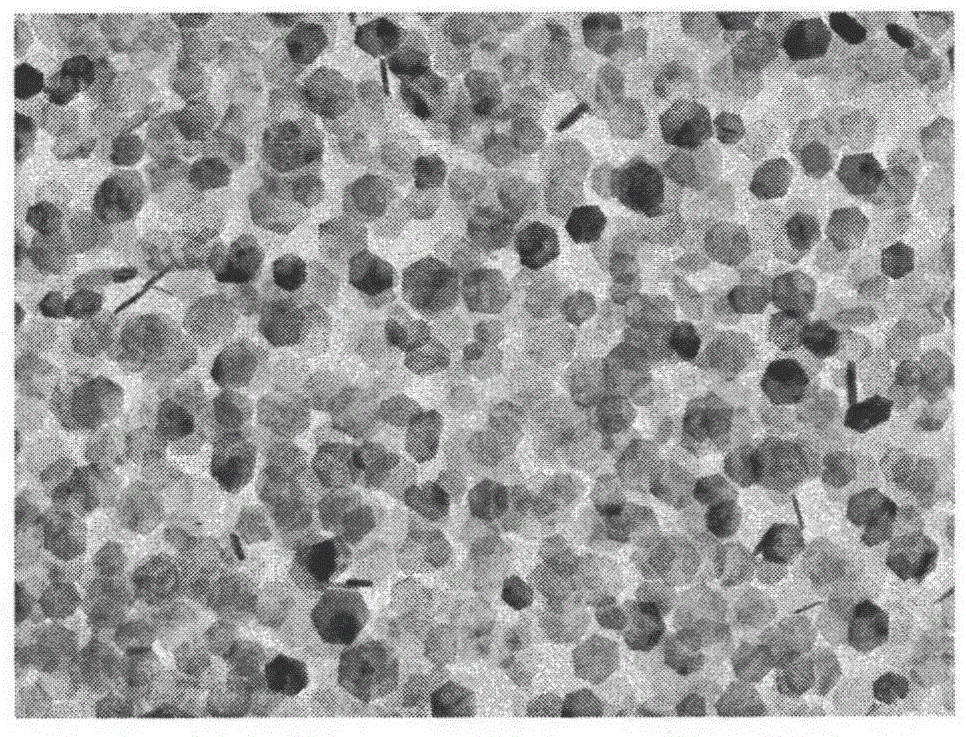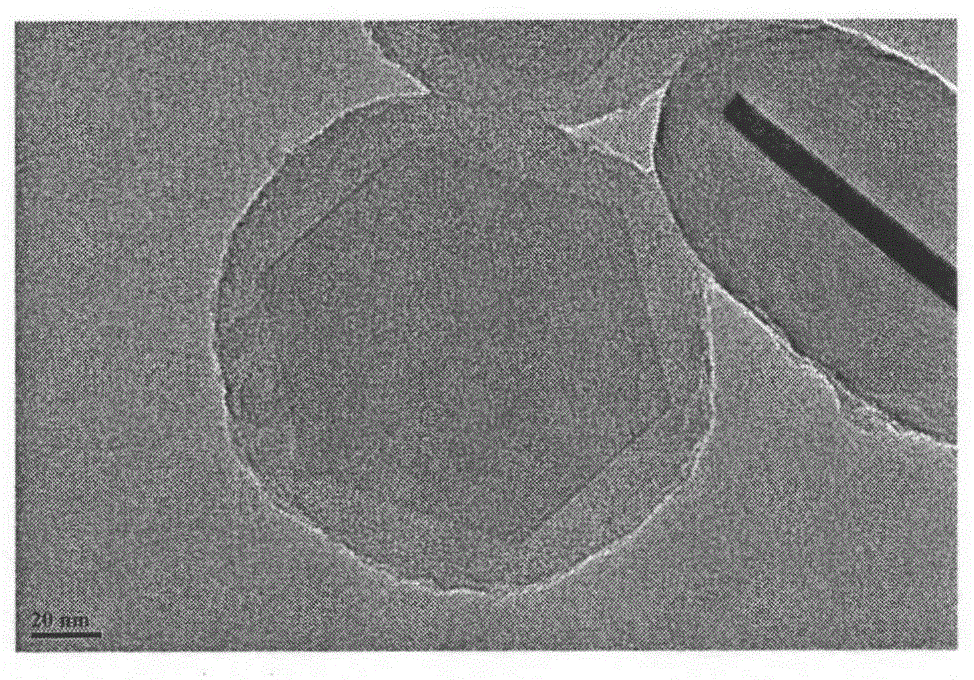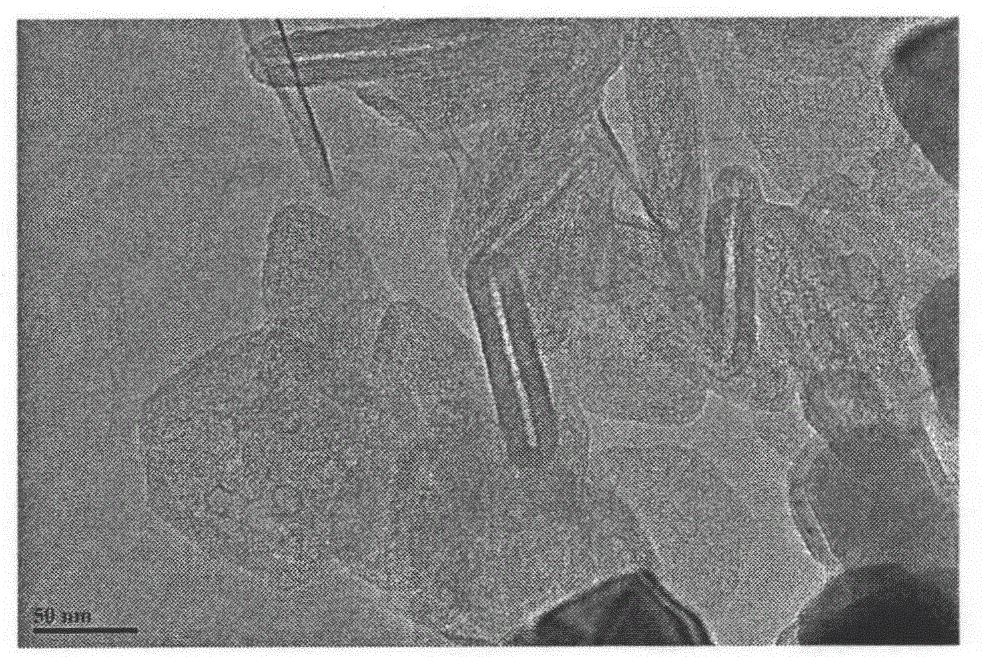Preparation method for core-shell structure type carbon-coated magnetic nano particles
A nanoparticle, core-shell structure technology, applied in chemical instruments and methods, alkali metal oxides/hydroxides, inorganic chemistry, etc., can solve the problems of low product purity, poor process controllability, complex equipment, etc., and achieve dispersion Good performance, good reproducibility, and uniform particle size
- Summary
- Abstract
- Description
- Claims
- Application Information
AI Technical Summary
Problems solved by technology
Method used
Image
Examples
Embodiment 1
[0036] Put 200mL triple-distilled water, 0.5816g nickel nitrate hexahydrate, and 0.30mL concentrated ammonia water into a 450mL hydrothermal reaction kettle in sequence, and react at 90°C for 120min to obtain Ni(OH) 2 Nanosheets. Subsequently, 6 mL of 7.2 mg / mL polyacrylic acid (PAA) surfactant was added dropwise, ultrasonically dispersed for 120 min, centrifugally washed with water, and dispersed in water. Transmission electron microscope observation shows that Ni(OH) obtained by hydrothermal method 2Nanoparticles are monodisperse regular hexagonal sheet structures with a diameter of about 90nm and a thickness of about 5nm, such as figure 1 shown.
[0037] Add 0.5mL0.908mol / L resorcinol (R) solution, 0.07mL formaldehyde (F) solution, 0.4mL dilute ammonia water to 60mLNi(OH) 2 In the dispersion liquid, the reaction was stirred at 50° C. and 400 rpm for 120 minutes. Centrifugal washing to obtain Ni(OH) 2 RF nanocomposite particles. Observation by transmission electron mic...
Embodiment 2
[0040] Put 200mL triple-distilled water, 0.5816g nickel nitrate hexahydrate, and 0.30mL concentrated ammonia water into a 450mL hydrothermal reaction kettle in sequence, and react at 90°C for 120min to obtain Ni(OH) 2 Nanosheets. Subsequently, 6 mL of 7.2 mg / mL polyacrylic acid (PAA) surfactant was added dropwise, ultrasonically dispersed for 120 min, centrifugally washed with water, and dispersed in water. Transmission electron microscope observation shows that Ni(OH) obtained by hydrothermal method 2 The nanoparticles are a monodisperse regular hexagonal sheet structure with a diameter of about 90nm and a thickness of about 5nm.
[0041] Add 0.25mL of 0.908mol / L R solution, 0.035mL of F solution, and 0.4mL of dilute ammonia to 60mL of Ni(OH) 2 In the dispersion liquid, the reaction was stirred at 50° C. and 400 rpm for 120 minutes. Centrifugal washing to obtain Ni(OH) 2 RF nanocomposite particles. Observation by transmission electron microscopy shows that the particles ...
PUM
| Property | Measurement | Unit |
|---|---|---|
| specific surface area | aaaaa | aaaaa |
| diameter | aaaaa | aaaaa |
| thickness | aaaaa | aaaaa |
Abstract
Description
Claims
Application Information
 Login to View More
Login to View More - R&D
- Intellectual Property
- Life Sciences
- Materials
- Tech Scout
- Unparalleled Data Quality
- Higher Quality Content
- 60% Fewer Hallucinations
Browse by: Latest US Patents, China's latest patents, Technical Efficacy Thesaurus, Application Domain, Technology Topic, Popular Technical Reports.
© 2025 PatSnap. All rights reserved.Legal|Privacy policy|Modern Slavery Act Transparency Statement|Sitemap|About US| Contact US: help@patsnap.com



